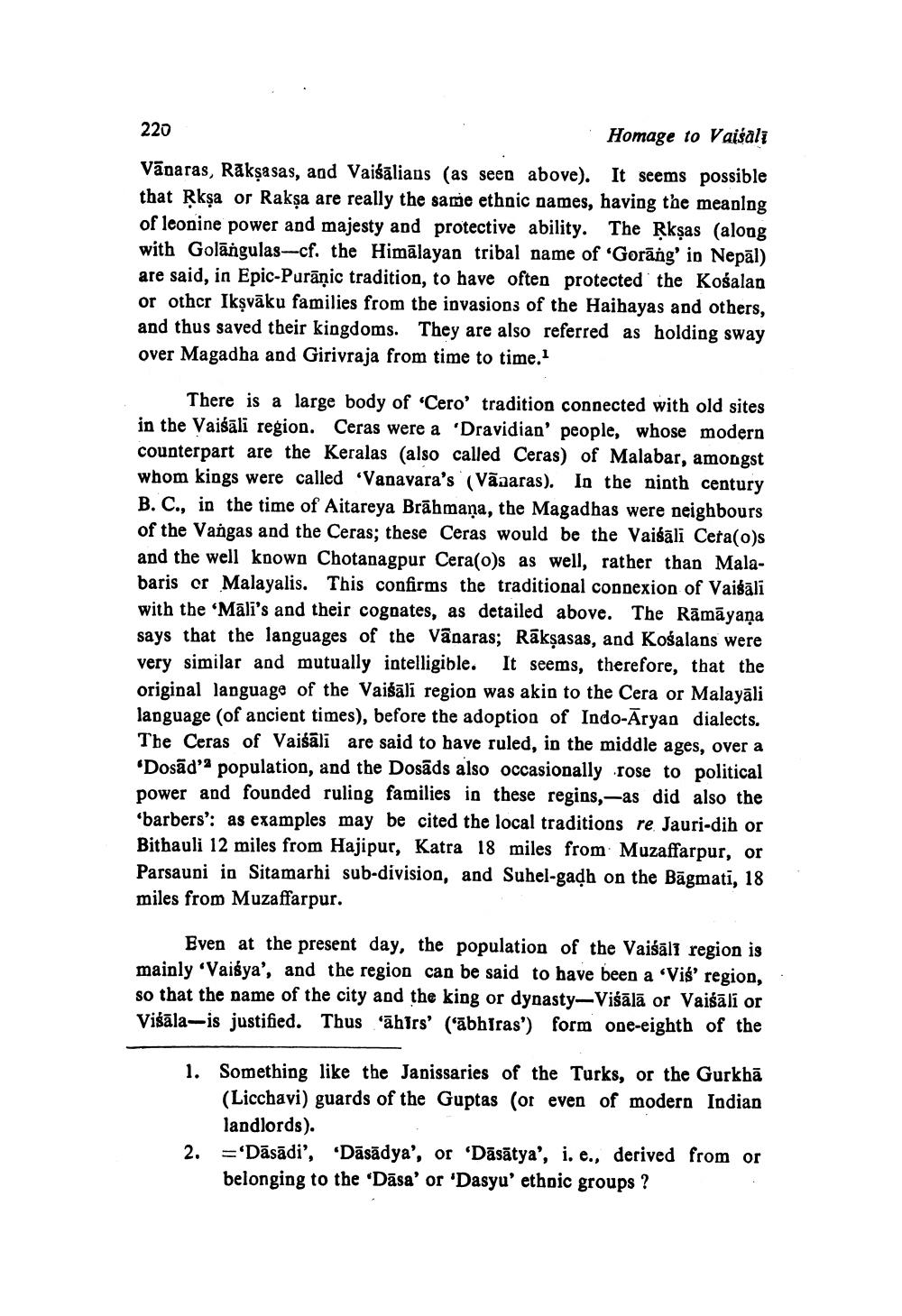________________ 220 Homage to Vaisali Vanaras, Raksasas, and Vaisalians (as seen above). It seems possible that Rksa or Raksa are really the same ethnic names, having the meaning of leonine power and majesty and protective ability. The Kksas (along with Golangulas--cf. the Himalayan tribal name of 'Gorang' in Nepal) are said, in Epic-Puranic tradition, to have often protected the Kosalan or other Iksvaku families from the invasions of the Haihayas and others, and thus saved their kingdoms. They are also referred as holding sway over Magadha and Girivraja from time to time. There is a large body of 'Cero' tradition connected with old sites in the Vaisali region. Ceras were a 'Dravidian' people, whose modern counterpart are the Keralas (also called Ceras) of Malabar, amongst whom kings were called 'Vanavara's (Vanaras). In the ninth century B. C., in the time of Aitareya Brahmana, the Magadhas were neighbours of the Vangas and the Ceras; these Ceras would be the Vaisali Cera(o)s and the well known Chotanagpur Cera(o)s as well, rather than Malabaris cr Malayalis. This confirms the traditional connexion of Vaigali with the 'Mali's and their cognates, as detailed above. The Ramayana says that the languages of the Vanaras; Raksasas, and Kosalans were very similar and mutually intelligible. It seems, therefore, that the original language of the Vaisali region was akin to the Cera or Malayali language (of ancient times), before the adoption of Indo-Aryan dialects. The Ceras of Vaisali are said to have ruled, in the middle ages, over a 'Dosad's population, and the Dosads also occasionally rose to political power and founded ruling families in these regins, -as did also the 'barbers': as examples may be cited the local traditions re Jauri-dih or Bithauli 12 miles from Hajipur, Katra 18 miles from Muzaffarpur, or Parsauni in Sitamarhi sub-division, and Suhel-gadh on the Bagmati, 18 miles from Muzaffarpur. Even at the present day, the population of the Vaisali region is mainly 'Vaisya', and the region can be said to have been a 'Vis' region, so that the name of the city and the king or dynasty-Visala or Vaisali or Visala-is justified. Thus "abTrs' ("abhiras') form one-eighth of the 1. Something like the Janissaries of the Turks, or the Gurkha (Licchavi) guards of the Guptas (or even of modern Indian landlords). 2. ='Dasadi', "Dasadya', or 'Dasatya', i. e., derived from or belonging to the 'Dasa' or 'Dasyu'ethoic groups ?




